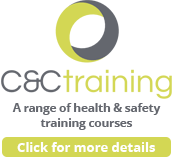1. Neglecting Regular Risk Assessments
One of the most frequent mistakes is failing to conduct regular risk assessments. Without these, potential hazardsRisks Businesses Face Without Effective Forms & Checklists Management may go unnoticed, increasing the risk of accidents and injuries.
How to Avoid: Implement a routine schedule for risk assessments. Engage employees in the process to identify hazards they encounter daily. Use a standardised checklist to ensure all areas are evaluated consistently and comply with health and safety legislation(s) in the workplace.
2. Inadequate Training for Employees
Many businesses overlook the importance of comprehensive health and safety training. This can lead to employees being unaware of safety protocols and how to respond to emergencies.
How to Avoid: Develop a robust training program that covers all aspects of workplace safety, including laws of health and safety. Ensure that training sessions are conducted regularly, and provide refresher courses to keep employees updated on new regulations and practices, such as those mandated by the health and safety at work act 1974.
3. Poor Housekeeping
Cluttered workspaces and poor housekeeping practices can create numerous hazards, such as slips, trips, and falls.
How to Avoid: Establish a clean-as-you-go policy and ensure all employees adhere to it. Regularly inspect work areas for clutter and obstructions. Implement a maintenance schedule to keep the workplace tidy and safe, in line with health and safety regulations in the workplace.
4. Ignoring Mental Health
Focusing solely on physical safety while neglecting employees’ mental health can lead to increased stress and burnout, affecting overall productivity and well-being.
How to Avoid: Promote a healthy work-life balance and provide resources for mental health support. Encourage open communication about mental health issues and create a supportive environment where employees feel comfortable seeking help. Compliance with legislation for health and safety should include mental health considerations.
5. Failure to Update Safety Procedures
Safety procedures that are outdated or not reflective of current operations can leave gaps in protection, leading to potential hazards being overlooked.
How to Avoid: Regularly review and update safety procedures to reflect changes in operations, equipment, or regulations. Involve employees in the review process to gather practical insights and ensure the procedures are relevant and effective, adhering to current health and safety laws and regulations such as COSHH legislation 2002.
By avoiding these common mistakes, small businesses can foster a safer, more productive work environment and ensure compliance.
How C&C Consulting Can Help You
Founded in 2011, C&C Consulting is committed to delivering consulting solutions for businesses of all sizes. Guided by a dedicated team of industry specialists, the firm provides bespoke strategies across various sectors, ensuring that each client benefits from targeted and effective support. What distinguishes C&C Consulting is its steadfast dedication to excellence and client success, further bolstered by their alliance with VISION, an advanced health and safety platform. This partnership allows C&C Consulting to offer cutting-edge, tailored solutions, reinforcing their status as a reliable leader in health and safety consultancy.










